Let’s Dive into the World of Deer Farming for Delicious Meat!
Are you curious about starting your own deer farming adventure? Well, I’m here to guide you through it! Let’s embark on this fascinating journey together and learn how to get started with deer farming for scrumptious meat.
First things first, why deer farming? Well, if you’re interested in exploring a unique and rewarding way to raise animals for food, deer farming might be the perfect fit for you. Plus, deer meat, also known as venison, is highly nutritious and packed with flavor, making it a popular choice for food enthusiasts.
Now, you might wonder how to begin your deer farming endeavor. Don’t worry; it’s easier than you think! Before diving in, it’s important to do some research and gather the right information. Understand the regulations and permits required by your local authorities to ensure you’re following all the necessary guidelines.
Once you’re all set in terms of paperwork, you can start by selecting the right breed of deer. There are various types of deer breeds to choose from, such as red deer, fallow deer, and white-tailed deer. Each breed has its own unique characteristics and requirements, so make sure to pick one that suits your farming goals and area.
When it comes to setting up your deer farm, you’ll need to create a comfortable and secure environment for your deer buddies. Constructing sturdy fences will help keep them safe and prevent any unwanted visitors. Create spacious enclosures to ensure the deer have ample room to roam, graze, and enjoy their natural habitat.
Feeding your deer properly is vital for their overall health and well-being. Consult with a veterinarian or an experienced deer farmer to develop a balanced diet plan that meets the specific nutritional needs of your chosen deer breed. Providing them with a mix of quality hay, fresh water, and nutrient-rich supplements will keep them happy and thriving.
Keeping a close eye on the health of your deer is crucial. Regular check-ups and vaccinations are essential to prevent the spread of diseases and ensure the longevity of your herd. Establish a good relationship with a local veterinarian who specializes in deer care to ensure your furry friends receive the best possible care.
As your deer farm grows, you might consider expanding your operations to include breeding. Breeding deer requires careful planning and knowledge of the mating seasons and behaviors of your chosen deer breed. This will help you ensure successful reproduction and the growth of your herd.
Remember, starting a deer farm is not a task to be rushed. It requires patience, dedication, and a genuine love for animals. But with the right knowledge and passion, your deer farming venture can be incredibly rewarding both personally and financially.
So, are you ready to embark on this exciting journey of deer farming for delectable meat? I believe in you! Together, we can explore the wonders of deer farming and savor the fruits of our labor. Happy farming, my friend!
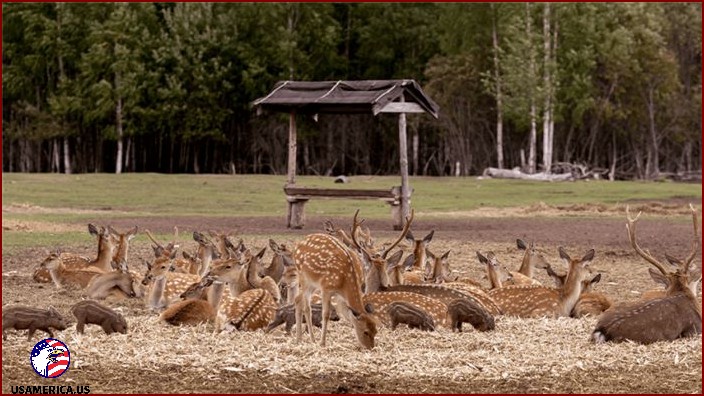
Did you know that deer meat is a type of venison? Venison comes from the Latin word Venari, which means to hunt. It’s pretty cool! But venison doesn’t just refer to deer meat – it also includes elk, reindeer, sika, and fallow deer. They’re all different types of farmed deer. However, the most common type of domesticated deer that you’ll find on a deer farm is the white-tailed deer.
Contents
- 1 Here’s a Step-by-Step Guide to Becoming a Deer Farmer
- 1.1 1. Start by Researching Local Regulations for Deer Farming
- 1.2 2. Find out the Best Ways to Keep Deer Healthy
- 1.3 3. Learn about what you need to have a deer farm
- 1.4 4. Learning How to Safely Breed Deer Populations
- 1.5 Step 5: Make Your Deer Farm Plan and Budget
- 1.6 Step 6: Get the Right Land, Facilities, and Equipment
- 1.7 Step 7: Creating a Plan to Attract Customers
- 1.8 Step 8: Taking Care of Deer Health and Veterinary Needs
- 1.9 9. Understanding and Implementing Ethical Breeding Practices
- 1.10 10. Establishing a Sustainable Feeding Program
- 1.11 11. Figuring Out How to Process and Sell Venison
- 2 Why Choose to Have a Deer Farm?
- 3 What Types of Deer are Farmed in the US?
- 4 Comparing Different Deer Species for Farming
- 5 The Upsides of Deer Farming
- 6 The Downsides of Deer Farming
- 7 Diseases Every Deer Farmer Should Be Aware Of
- 8 Other Types of Deer Farms – The Grand Canyon Deer Farm
- 9 Finding a Veterinarian
- 10 What are Some Good Programs for Starting a Deer Farm?
- 11 So, How Profitable is Deer Farming?
- 12 The Perfect Size for a Deer Farm
Here’s a Step-by-Step Guide to Becoming a Deer Farmer
1. Start by Researching Local Regulations for Deer Farming
If you want to set up a deer farm, it’s important to understand the rules and regulations. In the United States, deer farming is regulated by the Department of Agriculture and the state’s Game Commission. It’s crucial to familiarize yourself with these laws to avoid any legal issues in the future.
A great resource for learning about these regulations and getting guidelines is the North American Deer Farmers Association (NADEFA). They have all the information you’ll need to start your journey as a deer farmer!
They have these really helpful guides that cover everything you’d want to know about enclosure designs and ethical practices. And if you’re dealing with nonnative species like fallow and sika deer, it’s important to remember that there might be different, sometimes stricter, rules in place.
2. Find out the Best Ways to Keep Deer Healthy
Owning a deer farm is more than just making sure the animals stay in one place; it’s a complex process that requires understanding their unique social structures.
Keeping records is a must-do task. You have to closely keep track of each deer’s health, age, and breeding status. In the wild, young male deer naturally form groups with other males. On a farm, this natural behavior affects how you’ll need to organize your herd.
When I know that adult males, even though they start off being helpful, can turn hostile during mating seasons, I understand how important it is to keep them separate and under control.
When it’s winter or there’s not enough food in nature, I have to make sure I have another plan for feeding the deer.
3. Learn about what you need to have a deer farm
Creating a deer farm involves thinking about the infrastructure. One important thing is making sure there are systems in place for giving the deer food and water efficiently.
What’s great is that these systems can often be set up outside the fence. This means that when the deer are going through a sensitive time like mating season, there’s less need for people to go inside the enclosures.
When it comes to fencing, I’ve learned that just any old fence won’t do the trick. It has to be at least 8 feet tall and have strong posts that are 5 inches in diameter. Some farmers take it a step further by wrapping wooden snow fences around the main fences to make them more visually intimidating.
On top of that, we also need a squeeze chute to help manage the deer during medical check-ups or when we’re getting ready to send them off to the butcher.
4. Learning How to Safely Breed Deer Populations
When we have deer in captivity, safety becomes a top priority, especially during breeding season. While doe deer are usually able to conceive naturally in the wild, artificial insemination is often the preferred method on deer farms.
Let me tell you about this cool thing called artificial insemination. It’s a fancy and expensive process, costing about $700 each time. But you know what? It’s worth it because it’s safe and controlled, making breeding much easier for farmers.
Some farmers, on the other hand, choose to invest in a top-notch breeding buck. But let me tell you, it comes with a hefty price tag of $5,000 or more. Yikes!
Here’s something you need to know: female goats have a really short breeding window, only about 48 hours. That means farmers have to plan their breeding carefully to make the most of those precious hours.
But it doesn’t stop there. The male goats also need special attention. During the rut, they can lose up to 25% of their body weight. That’s a lot! So, feeding schedules are super important to keep them healthy.
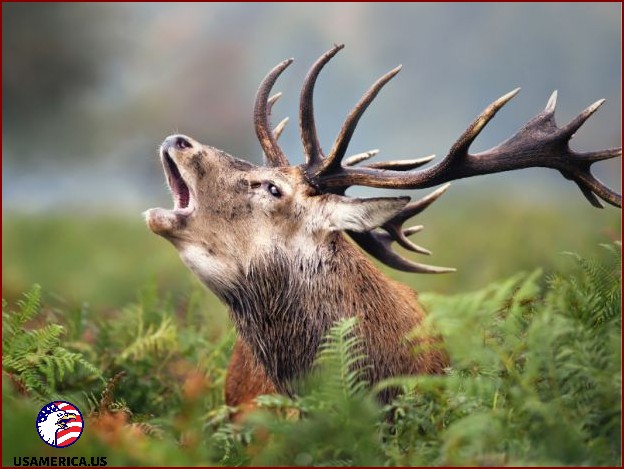
Step 5: Make Your Deer Farm Plan and Budget
Now it’s time to create a plan and budget for your deer farm. Let’s get started!
- Fencing: First things first, let’s talk about fencing. You’ll need to get some good quality fencing to keep your deer safe. Right now, a 300-foot roll of 8-foot fencing costs around $400. That’s an essential investment. Don’t forget to include the cost of posts too. They’re about $10 each, and you’ll need to place them every ten feet. Oh, and don’t forget the gates. They usually cost around $200. Some farmers also use electric wire on the top and bottom of the fence to keep away predators.
- Breeding Stock: Moving on to breeding stock. On an acre of land, you can have 2-3 adult whitetails or 1-2 elk. If you want to buy a weaned doe, you’ll need to budget at least $1500.
Step 6: Get the Right Land, Facilities, and Equipment
Now it’s time to make sure your farm has everything it needs to run smoothly. That means you’ll need some important equipment and facilities.
First, you’ll need machinery like tractors, ATVs or UTVs, and trailers designed for safely transporting deer. These tools are essential for taking care of your farm and making sure things run well.
When it comes to a farm, how it’s set up is really important. You’ll need pens that separate the deer based on their age and sex. But there’s something else that’s just as important, even if it’s not so obvious – the quality of the soil.
If you discover that the soil on your land is not up to par, it’s a good idea to do a soil test. This will help you figure out what nutrients are lacking and then you can make the necessary improvements to make sure the deer have the right food to eat.
And don’t forget about special facilities for handling the deer. One example of this is the squeeze chutes that were mentioned earlier. These are important structures that you’ll need to have on your farm.
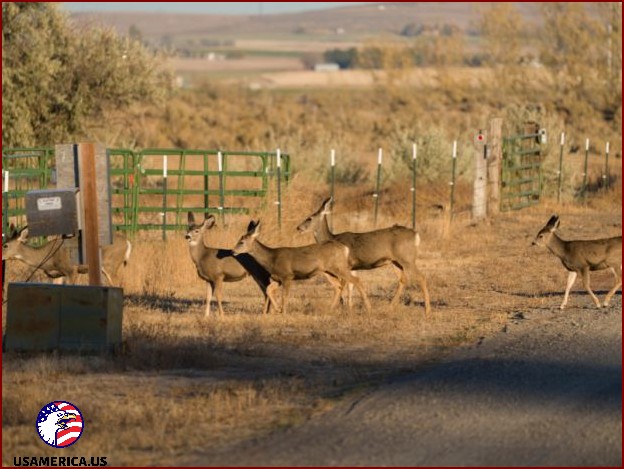
Step 7: Creating a Plan to Attract Customers
Now, let’s tackle the task of getting people interested in your deer farm. First, you need to figure out who your target customers are. Are you selling directly to individuals, or are you aiming to partner with retail stores or restaurants?
Creating a successful marketing strategy involves more than just traditional advertisements. In today’s world, technology can help us with almost every aspect of farm management. There are plenty of farming apps available that can make your life easier.
So, dive into the world of the internet! You’ll be amazed at the range of apps available, specifically designed for farmers. Whether it’s equipment repair, chicken farming, or even starting a goat farm, there’s an app to help you out.
Step 8: Taking Care of Deer Health and Veterinary Needs
To take care of your herd and prevent diseases, it’s important to set up a regular health monitoring system. This means scheduling check-ups with a vet and making sure your deer are vaccinated. It’s also crucial to have a plan in place for common illnesses and injuries, and to have proper facilities for veterinary care that is safe and efficient.
9. Understanding and Implementing Ethical Breeding Practices
It’s important to learn about ethical breeding practices in order to keep your deer population healthy. This includes understanding genetic diversity, making sure you avoid inbreeding, and taking care of both does and bucks during the breeding season. Stay informed about the best practices in deer genetics so that you can have a strong and healthy herd.
10. Establishing a Sustainable Feeding Program
I want to develop a feeding program that helps deer stay healthy and well-nourished. This means finding the right balance of natural food, extra food, and minerals. It’s important to understand how the deer’s dietary needs change with the seasons and plan their feeding schedule accordingly.
11. Figuring Out How to Process and Sell Venison
First, I need to learn about the rules and best ways to process venison. I can connect with licensed meat processors or think about setting up my own processing facilities. I also need to come up with a plan for marketing and selling the venison. There are different options to consider, like selling it at local markets, to restaurants, or directly to consumers.
Why Choose to Have a Deer Farm?
Did you know that deer farming is becoming a popular business in rural America? It’s one of the fastest-growing industries when it comes to livestock. And there’s a good reason for that – venison, which is deer meat, is not only delicious but also a healthy choice. It’s packed with protein and is a lean meat, meaning it’s low in fat.
Now, if you’re wondering how to start farming without any money, I’ve got some good news for you. The USDA, which is the United States Department of Agriculture, offers different loan programs specifically designed to help new deer farmers like yourself to get started.
What Types of Deer are Farmed in the US?
When it comes to farming deer, there are mainly four species that are commonly used as farm animals or livestock in the US.
Fallow Deer and Sika Deer
When it comes to choosing deer for farming, Sika and Fallow deer are popular picks because they are smaller and more manageable than their whitetail cousins. Plus, they are incredibly beautiful creatures. What makes them even more special is that they are not native to the US, so they don’t live in the wild.
Let’s Talk about White-Tailed Deer
White-tailed deer, on the other hand, can be found throughout the US in their natural habitat. They are also the most common type of deer you’ll find on a deer farm. However, raising any species on a deer farm is no easy task, and handling, housing, and fencing can be quite challenging, especially when dealing with larger species.
Now, Let’s Take a Look at Elk
Raising elk is a whole different ball game due to their enormous size. They are powerful and agile creatures and have massive appetites just like cattle. In the wild, they prefer being in herds, and at any age, they’ll do whatever it takes to get through or over a fence to join their fellow animals.
Comparing Different Deer Species for Farming
So, I want to make sure you have all the information you need to make a smart decision. That’s why I put together this handy table comparing the important characteristics of various deer species commonly found on farms in the US:
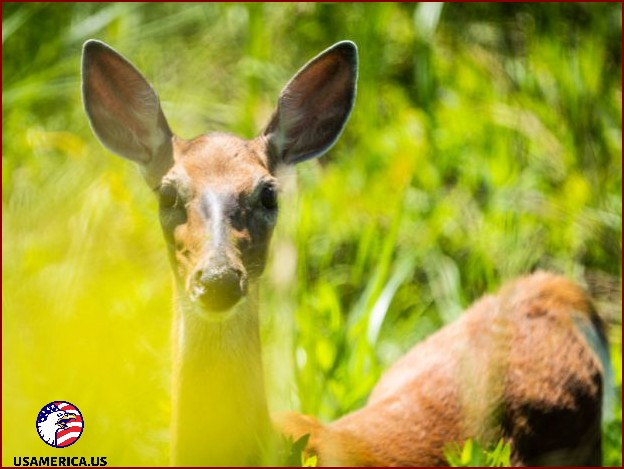
The Upsides of Deer Farming
Deer farming has some awesome advantages that make it worth considering. Let me tell you about them:
- They grow up fast: Deer reach maturity pretty quickly, which means you don’t have to wait around for too long to see results.
- They’re fertile for a long time: Deer can have babies until they’re a whopping 20 years old. That’s a lot of little deer running around!
- They have multiple uses: Deer offer more than just meat. You can sell their antlers, velvet, and hides, opening up additional revenue streams.
- They often have lots of babies: Many times, deer give birth to two or more little ones, which means you’ll have a growing herd before you know it.
- They’re inexpensive to feed: Compared to other livestock like cows, deer don’t need as much food. This makes them more cost-effective to raise in terms of feeding.
The Downsides of Deer Farming
While there are plenty of positives to deer farming, it’s not all sunshine and rainbows. Here are a few drawbacks you should keep in mind:
- Fencing can be costly: Building suitable fences for deer can put a dent in your pocket. It’s an important expense to consider.
- Regulations galore: If you plan on raising deer for meat, be prepared to deal with loads of regulations. The industry is highly regulated, so make sure you’re aware of all the rules.
- Public perception: Some people see deer as pets rather than animals that can end up on your dinner plate. You may face negativity from animal lovers who don’t understand the purpose of deer farming.
Diseases Every Deer Farmer Should Be Aware Of
Being a deer farmer comes with its share of challenges, and one of them is dealing with diseases. Here are some important ones to be aware of:
I need to rewrite the provided text, while maintaining its fundamental meaning and keeping the HTML markup intact. Here’s my attempt:
- Chronic wasting disease (CWD) is a really bad disease. It affects the brain and muscles, causing them to waste away. Animals of any age can get it. They think it spreads through saliva, like when they share food. Unfortunately, there’s no vaccine or cure.
- Tuberculosis is another deadly disease. It can spread between deer in a herd and even between deer and cows. If a cow is infected, it can make other animals on the farm sick too.
- Brucellosis is not common in most deer, but it’s common in Elk. It can pass from the mother elk to her calf while it’s still in the womb. Even though there’s a vaccine for brucellosis in cows, it hasn’t been approved for deer herds.
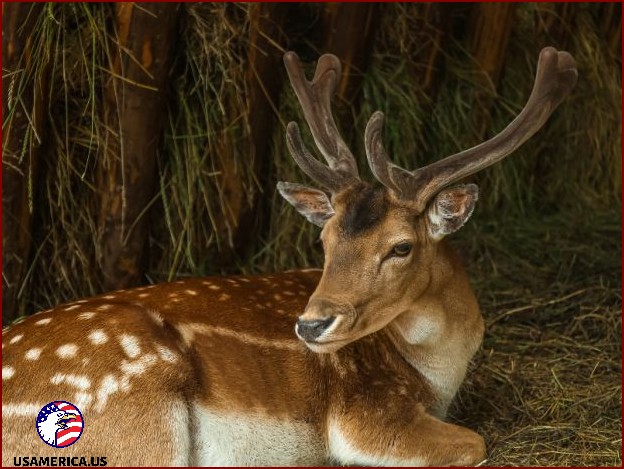
Other Types of Deer Farms – The Grand Canyon Deer Farm
Have you heard of the Grand Canyon Deer Farm? It’s a special place that’s been around for a long time along old Route 66. You can find it in Williams, Arizona.
When you visit the Grand Canyon Deer Farm, you’re in for a treat! It’s a 10-acre wonderland where you can touch and feed all sorts of animals. You’ll get to see wallabies, llamas, bison, deer, and more. It’s truly a one-of-a-kind experience that you won’t want to miss.
Finding a Veterinarian
If you have a deer farm and you need a veterinarian who specializes in treating deer, it can be tough to find the right one. Especially if your farm doesn’t have the right facilities. A deer-focused veterinarian needs certain infrastructure to make sure both humans and animals stay safe.
It’s super important to make sure that your facility has specialized spaces for medical treatment and isolation. You also want to have effective systems in place to safely guide the deer into these areas.
Don’t forget to consult with a veterinarian to figure out how to adapt your facilities for the medical needs of your herd. You want to be able to provide a safe and efficient environment for both routine check-ups and emergency situations.
What are Some Good Programs for Starting a Deer Farm?
There are a bunch of colleges and universities throughout the US that specialize in white-tailed deer production. Some really notable ones include Penn State University, West Virginia University, and Miami University in Ohio.
If you’re interested in hoofed animals specifically, the Zoo Keeper Program offers various programs where you can focus on ungulates.
Welcome to the Deer Farm Start-Up Program, offered by the North American Deer Farmers Association! If you’ve ever wondered about the profitability of deer farming, you’re in for a treat.
So, How Profitable is Deer Farming?
Let me tell you, deer farming is no small enterprise. In fact, it’s a major contributor to agriculture, bringing in a whopping $7.9 billion in annual revenue in the United States alone.
Now, let’s talk about the meat. When you think about it, the value of deer meat can really surprise you. White-tailed deer meat sells for an average of $30 per pound, while elk meat can fetch an even higher price of $45 per pound. That’s some pricey meat, my friend!
But here’s the thing, it’s important to consider how much meat you can actually get from each animal. Take a 100-pound doe, for example. You might expect to get around 45 pounds of meat that you can sell.
And don’t think it’s all just fancy steaks. Oh no, there’s a variety of cuts to consider, like hamburger and tenderloin, each with their own market value. So, it’s important to take all of that into account when thinking about your profits.
Let me break down how understanding economics can help you set your prices and expect good revenue.
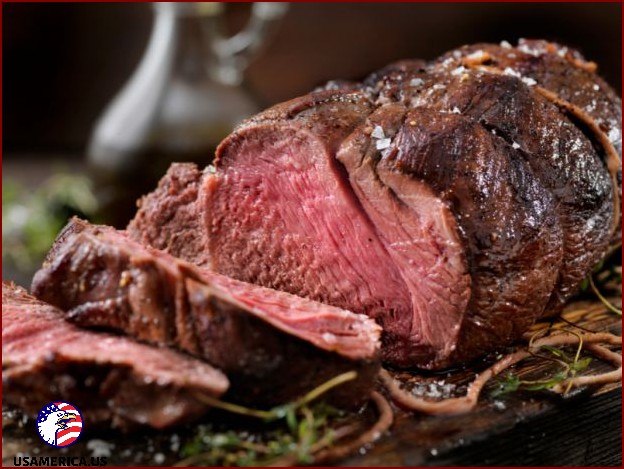
The Perfect Size for a Deer Farm
Have you ever wondered how much land you need for a deer farm? It may surprise you to learn that the answer is not as much as you might think. In fact, just one acre of land can comfortably house 2-3 adult white-tailed deer. That’s right, you don’t need a vast expanse of land to start your own deer farming business. Even if you have limited space, you can still become a successful deer farmer.
What makes deer farming so appealing is its remarkable land efficiency. It’s one of the best business ventures you can pursue on vacant land. With just a small plot, you can embark on an exciting journey of raising and caring for these majestic creatures.
Of course, the specific acreage you need may vary depending on various factors. For instance, the availability of natural forage plays a role. Different types of deer also have different requirements. And if you plan to have additional facilities like birthing pens or isolation areas, you might need a bit more space.
So, while a small plot may be enough to get started, it’s crucial to carefully evaluate your land usage to ensure your deer farm thrives. With the right planning and attention to detail, you can create a successful business that brings joy and fulfillment to both you and your deer.
